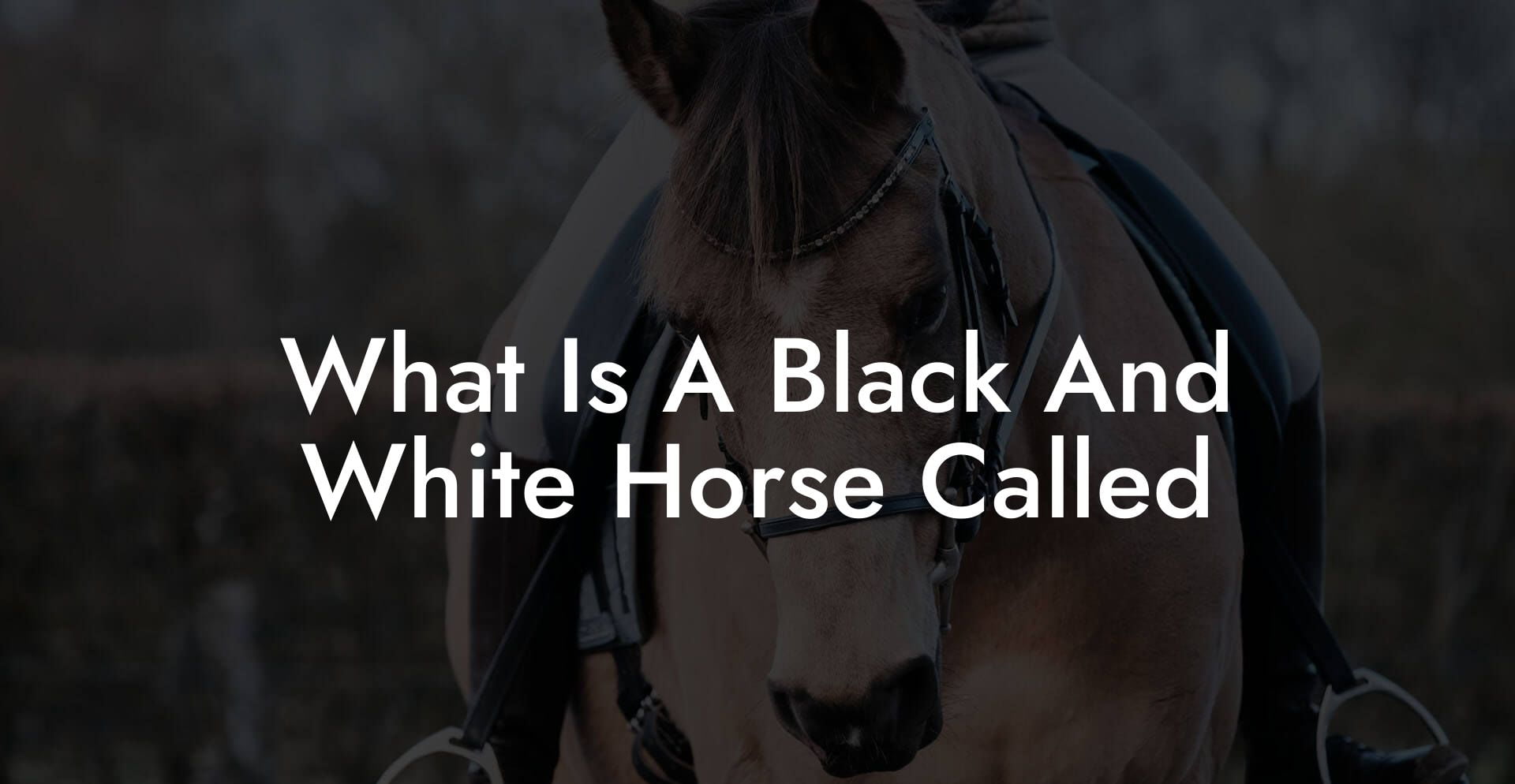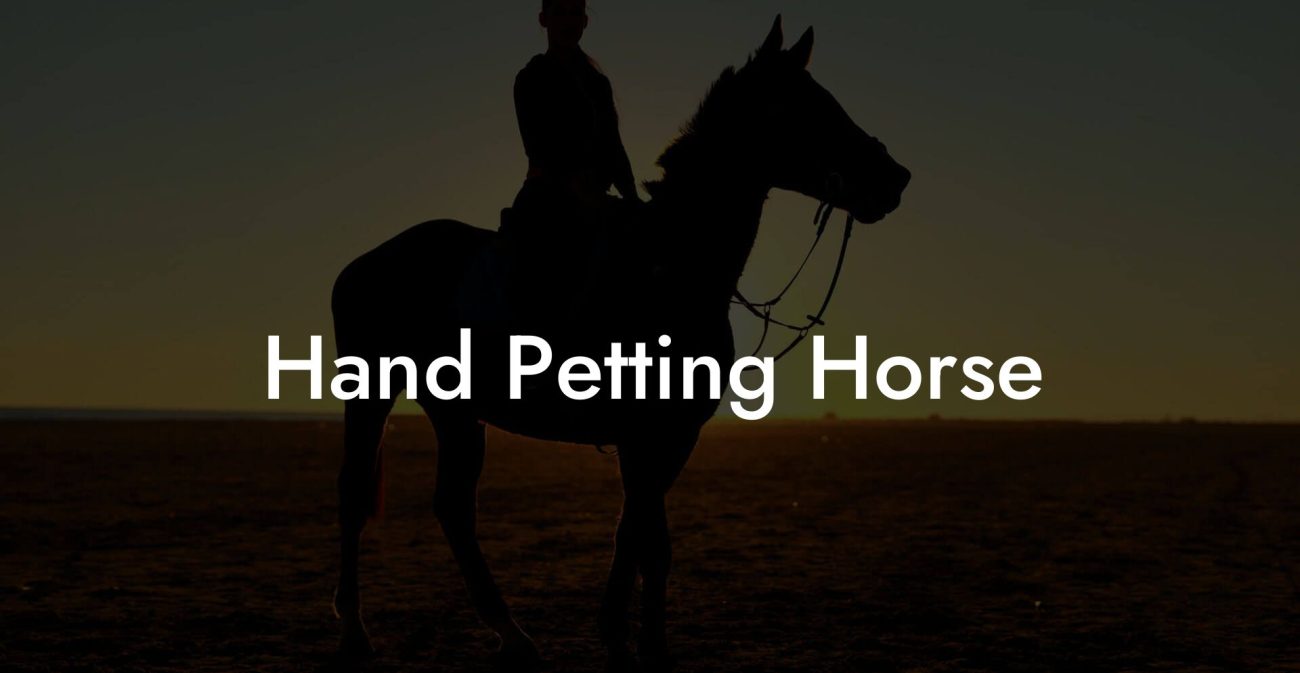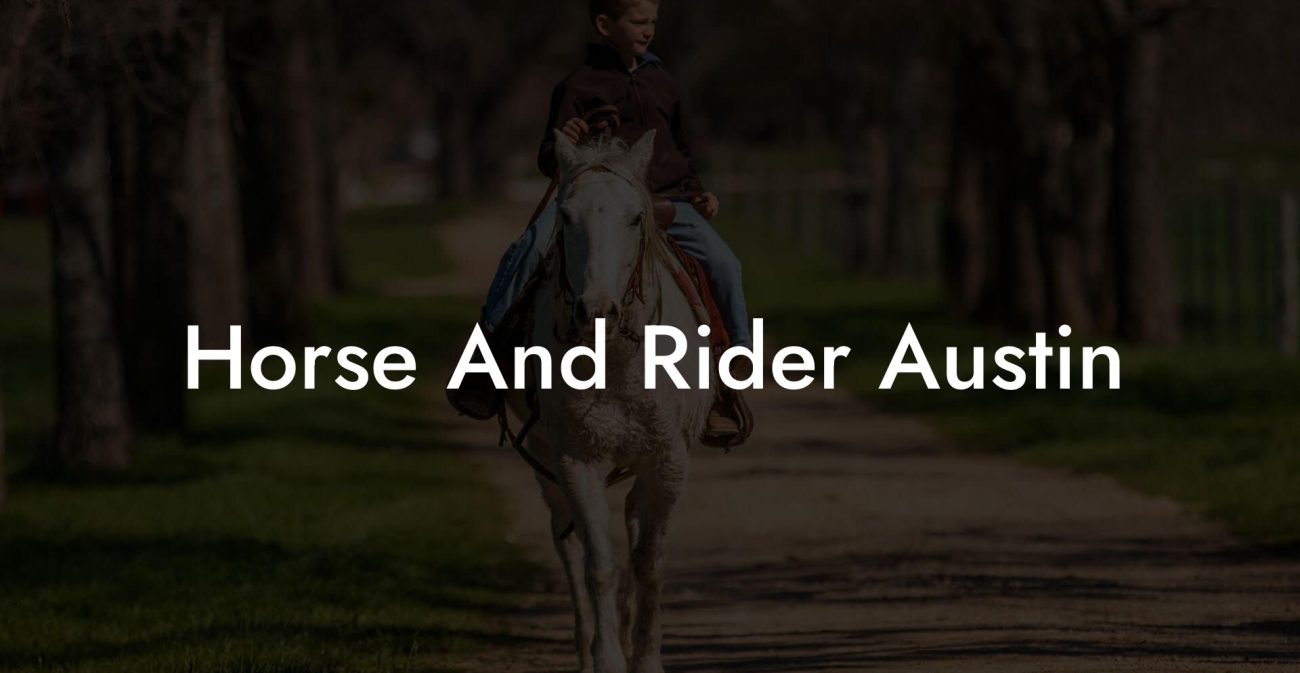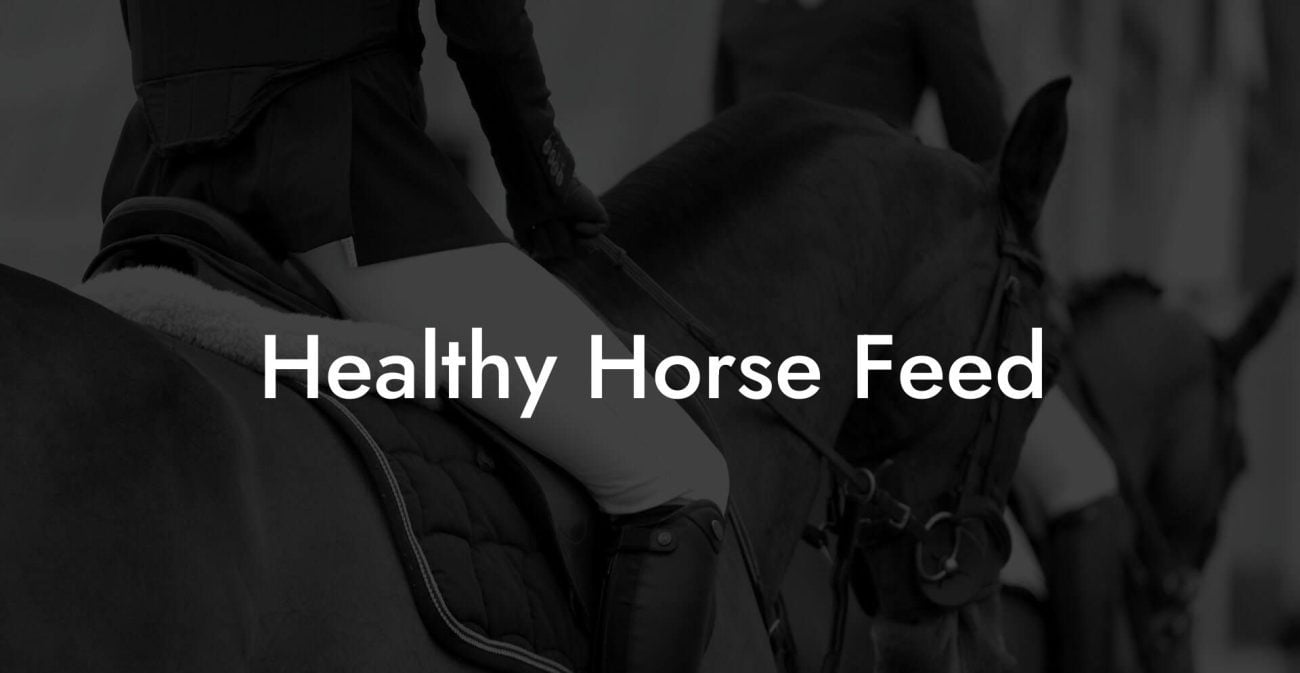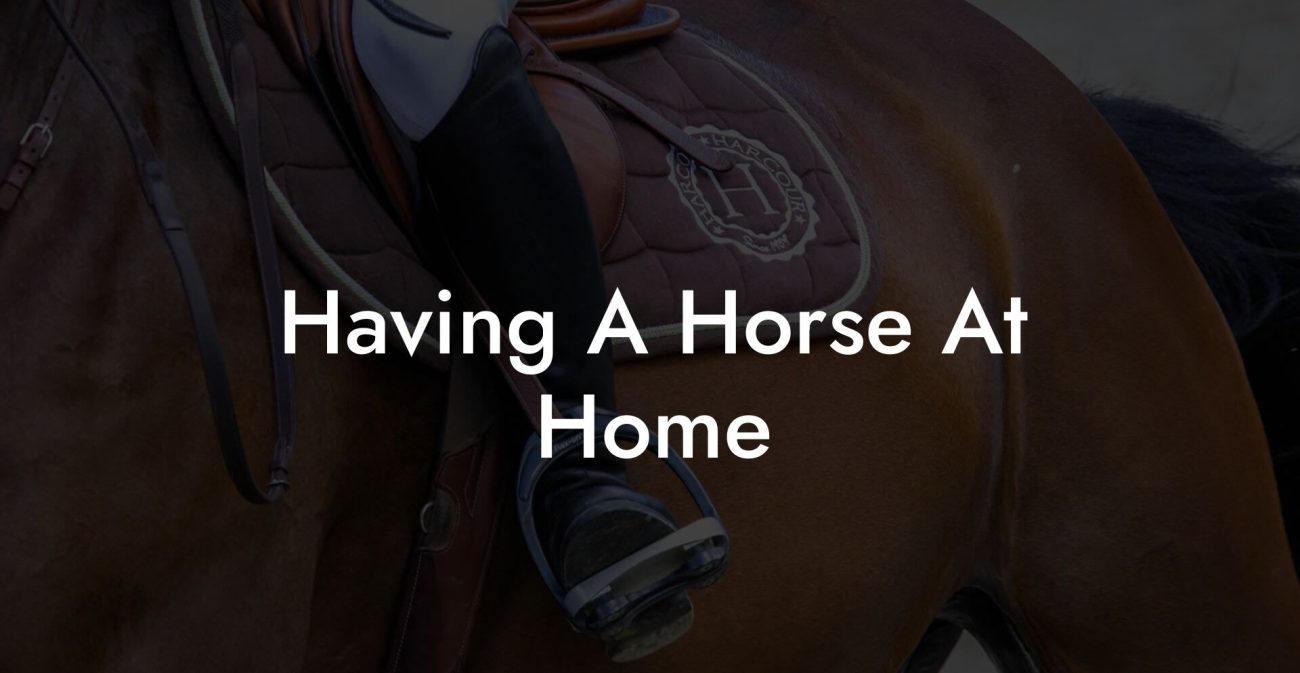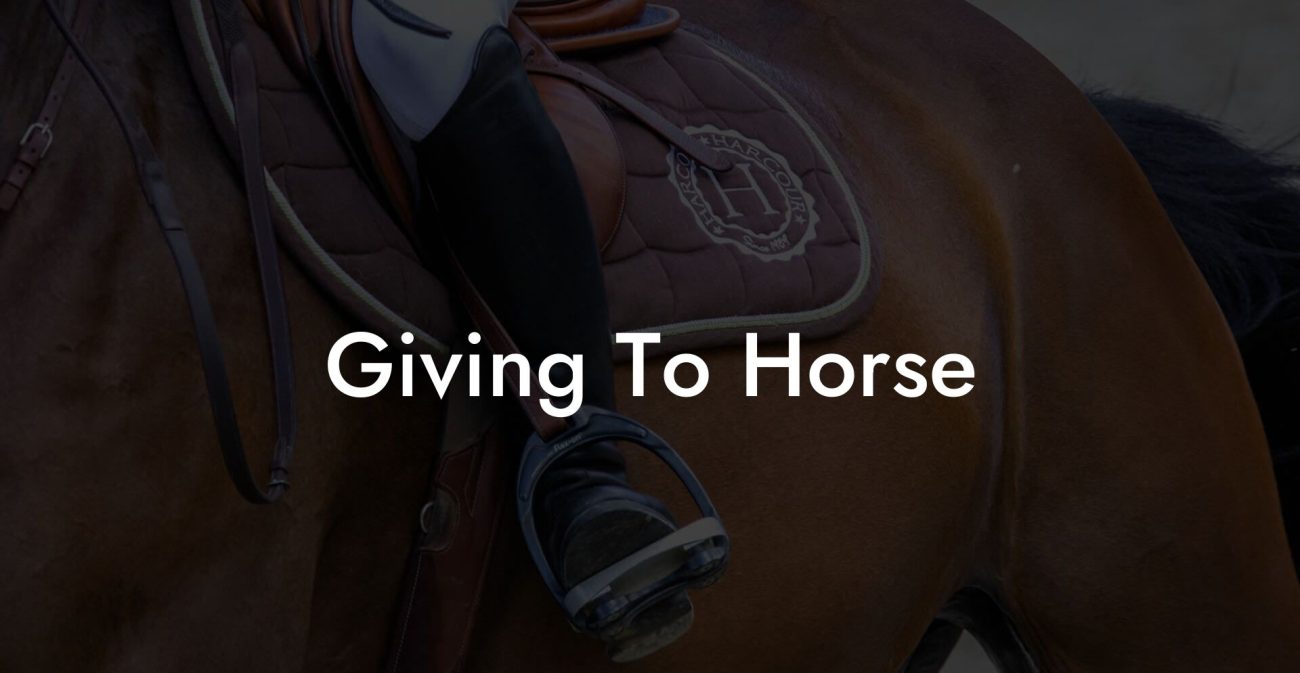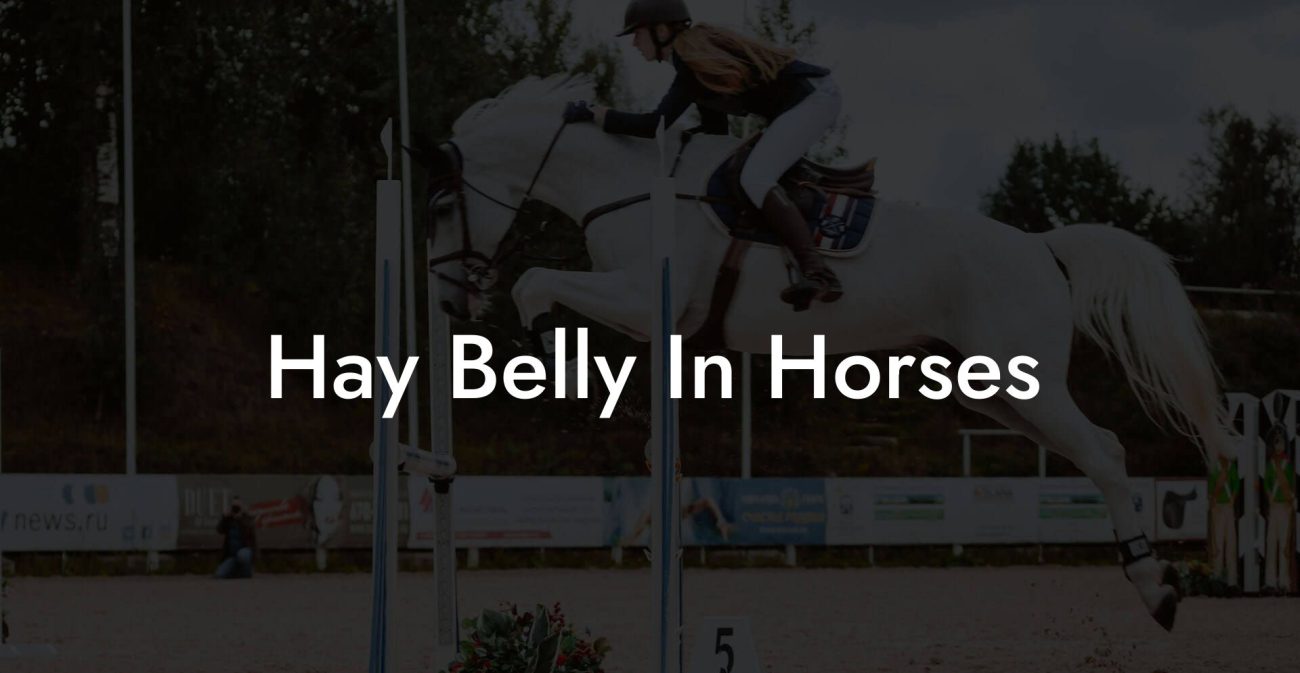Ever found yourself marveling at a horse that looks like a living work of art, an equine canvas splashed with dramatic black and white contrasts, and wondered, “What is a black and white horse called?” You're not alone. From Instagram feeds to meme reels, these striking beauties capture our imaginations and hearts, but there’s so much more to these horses than just their eye-catching looks. In this deep dive, we’ll explore the fascinating world of black and white horses, the terminology behind their coats, the genetics that create these patterns, and practical tips on caring for your equine friend in a modern, millennial, and Gen-Z style. Buckle up, because this isn’t your typical boring biology lesson, it’s a fun, engaging, and informative ride into the world of horse care and equine aesthetics!
Quick Links to Useful Sections
- The Colorful Language of Equine Coats
- Pinto: The All-Encompassing Term
- Piebald and Skewbald: The Nuances Explained
- From Genes to Jaw-Dropping Patterns: The Science Behind the Look
- The Role of Genetics in Equine Coloration
- Evolution and Natural Selection: A Touch of Wild Artistry
- More Than Just a Pretty Face: Understanding Horse Personalities and Traits
- Temperament and Energy Levels
- Social Behavior and Herd Dynamics
- Getting to Know Your Black and White Horse: Essential Care Tips
- Daily grooming and Maintenance
- nutrition Tailored for Your Colorful Companion
- Exercise and Fitness: Keeping Your Equine in Top Shape
- Understanding Behavioral Cues: Building a Lasting Bond
- Listening to Their Body Language
- Establishing Trust Through Routine
- Positive Reinforcement and Communication
- Modern Equine Management: Tools, Apps, and Community
- Equine Management Software and Apps
- Online Communities and Social Media Groups
- Virtual Clinics and Webinars
- A Deep Dive into the History and Culture of Black and White Horses
- Historical Significance
- Cultural Interpretations and Modern Symbolism
- Caring for Your Equine Companion: A Complete Lifestyle Guide
- Morning Routine: Kickstarting the Day
- Midday Activities: Nutrition, Training, and Bonding
- Evening Rituals: Wind Down and Reflect
- Recognizing and Addressing Common Health Issues
- Skin and Coat Issues
- Joint and Muscular Health
- Dental and Digestive Wellness
- Resources and Community Support: Your Next Steps
- Equine Care Websites and Blogs
- Workshops and Local Equestrian Events
- Social Media and Online Communities
- Continuing Education and Online Certifications
- Exploring the World Beyond the Stable: Travel, Competitions, and Lifestyle
- Competitions and Showcases
- Trail Rides and Outdoor Adventures
- Equine Photography and the Social Media Factor
- Spotlight on Breeds and Selection: Finding Your Perfect Equine Match
- American Paint Horse and Its Relatives
- Other Breeds Featuring Striking Patterns
- Integrating Natural Remedies and Holistic Practices
- Herbal Supplements for Coat Health
- Aromatherapy and Stress Relief
- Seasonal Horse Care: Adapting to Weather and Environment
- Summer: Beat the Heat with Smart Strategies
- Fall: Shedding and Strengthening Through Transition
- Winter: Cozy Up With Extra Care
- Spring: Renewal and Rejuvenation
- Expert Insights: Interviews with Leading Equestrian Professionals
- Insight from a Renowned Equine Veterinarian
- Perspective from a Top Equestrian Trainer
- A Message from a Leading Equine Nutritionist
- Your Journey to Equine Excellence: Embracing the Art and Science of Horse Care
- Frequently Asked Questions About Black and White Horses
- Final Words on a Vibrant Equine Journey
The Colorful Language of Equine Coats
When it comes to horses with a mix of black and white, the language can get as colorful as the horses themselves. In the world of equine terminology, color patterns are not just names, they’re a reflection of history, genetics, and tradition. The most common terms you might hear include “pinto,” “piebald,” and “skewbald.” While these terms are sometimes used interchangeably in casual conversation, each has its specific definition.
Pinto: The All-Encompassing Term
If you’ve ever scrolled through a horse Instagram hashtag like #pinto, you know these horses are the rockstars of the equine world. The term “pinto” is used to describe horses with irregular patches of white and any other color. Whether the white is the dominant feature or just a complementary splatter, if the horse has distinct patches, it’s considered a pinto.
Piebald and Skewbald: The Nuances Explained
Here’s where things get interesting: when a horse’s base coat is black with white patches, we call it “piebald.” On the flip side, if the base coat is any other color (think chestnut, bay, or gray) with white patches, it’s referred to as “skewbald.” So technically, a black and white horse could be called a piebald if its underlying color is black, but many in the modern equestrian world use the umbrella term pinto to cover all the patterns.
These terms might seem like a load of jargon, but they’re crucial in the horse industry for identification, breeding, and even competitions. Understanding these terms not only helps you navigate conversations at your local stable but also shines a light on the genetic magic behind these stunning coat patterns.
From Genes to Jaw-Dropping Patterns: The Science Behind the Look
Ever wonder what makes a horse’s coat look like a high-contrast masterpiece? The answer lies deep within their genes. Equine coat color is determined by a combination of genetic factors that dictate pigment distribution, white spotting, and even the size and shape of the patches.
The Role of Genetics in Equine Coloration
Genetic mutations and selective breeding are responsible for the stunning variety in horse coat colors. For black and white horses, a specific set of genes called the “splashed white” or “tobiano” gene mutations often play a key role. These genes control where and how the white markings are distributed across the horse’s body. In many cases, the pattern’s uniqueness is the result of a delicate interplay between dominant and recessive genes.
When breeders selectively pair horses with desirable coat patterns, the likelihood of producing a piebald or pinto offspring increases. For aficionados and breeders alike, understanding these genetic underpinnings is like having the ultimate cheat sheet to the equine world.
Evolution and Natural Selection: A Touch of Wild Artistry
While human intervention has certainly honed the beauty of these patterns, it’s worth noting that variations in coat color also occurred naturally. Wild horses and their ancestors, through millennia of evolutionary pressures, sometimes exhibited mottled coats as a natural form of camouflage. Today, though the wild ancestors have grown more uniform in many regions due to human selection, the legacy of these natural patterns lives on in our domesticated horses.
This blend of nature and nurture means that every black and white horse you encounter is a living testament to both genetic marvel and human ingenuity.
More Than Just a Pretty Face: Understanding Horse Personalities and Traits
Sure, the coat might be mesmerizing, but owning and caring for a black and white horse means appreciating what’s under the surface, its personality, behavior, and needs. Much like people, horses have their own quirks, preferences, and temperaments.
Temperament and Energy Levels
Gen-Z and millennial horse enthusiasts love personality as much as aesthetics. Many owners report that black and white horses tend to have vibrant, outgoing personalities. However, personality traits can vary widely, and a horse’s behavior is influenced by factors such as its training, environment, and even its genetic predisposition.
Whether your horse is a laid-back “couch potato” or a wild, spirited adventurer, understanding its temperament is key to effective training and daily care.
Social Behavior and Herd Dynamics
Horses are inherently social creatures with a well-defined hierarchy, known as the “herd mentality.” A black and white horse, like any other, thrives in an environment that allows for social interaction. Knowing how your horse fits within herd dynamics can help you manage its behavior, reduce stress, and even prevent health issues that arise from isolation or anxiety.
This understanding reinforces the need for thoughtful, empathetic care, a topic we delve into in our upcoming sections.
Getting to Know Your Black and White Horse: Essential Care Tips
Owning a horse isn’t just about admiring its beauty from afar, it’s about diving into the rewarding journey of horse care. Whether you’re a seasoned equestrian or a curious newcomer, this section is tailored to help you care for your dazzling black and white companion in a way that combines modern techniques with good ol’ common sense.
Daily grooming and Maintenance
Grooming is more than just an aesthetic routine, it’s a vital part of your horse’s overall well-being. For horses sporting dramatic black and white patterns, grooming serves multiple purposes: maintaining coat health, managing shedding, and providing an opportunity for a bonding ritual.
Brushing: Use a soft-bristled brush to remove dirt and dust from your horse’s coat. When dealing with a pinto or piebald, extra attention to the junction of colors can help prevent skin irritation.
Hoof Care: Regular hoof cleaning and inspection are critical. Dirt, stones, and muck can accumulate in the hooves, leading to discomfort or infection. Keep a dedicated hoof pick handy, and schedule regular checks with a farrier.
Bathing: Occasionally, a full bath is in order. Use horse-specific shampoos to wash away environmental pollutants and to keep the coat shiny. Always dry the horse thoroughly afterward to prevent skin conditions.
nutrition Tailored for Your Colorful Companion
As trendy as social media filters can be, nothing beats the natural glow of a well-cared-for horse. And much like us, horses thrive on a balanced diet. For a black and white horse, particularly one that might be showing off unique patterns due to selective breeding, nutrition plays a pivotal role in coat health and overall vitality.
Forage First: High-quality hay or pasture should form the foundation of their diet. The roughage not only aids digestion but also keeps their teeth busy.
Supplemental Feeding: Depending on your horse’s age, activity level, and any specific health concerns, you might consider integrating grains, vitamins, and minerals. Always consult with a veterinarian or equine nutritionist to tailor the diet to your horse’s needs.
Hydration: Fresh, clean water should be available at all times. Keeping your horse hydrated is essential for digestion, circulation, and maintaining optimal skin and coat health.
Exercise and Fitness: Keeping Your Equine in Top Shape
Regular exercise is a cornerstone of maintaining a healthy horse, and this is especially true for vibrant horses with unique coats whose muscles and skin thrive on activity. Whether your horse is participating in competitive events or simply enjoying a leisurely pasture run, exercise helps improve circulation, reduces stress, and promotes a lustrous coat.
Groundwork Training: Basic training like leading, haltering, and desensitization routines not only builds trust but also provides essential physical exercise.
riding or Driving: Depending on your horse’s temperament and training, regular riding sessions or driving the carriage (if applicable) add dynamic variety to its workout routine. These activities target muscle groups that are key to overall balance and strength.
Interactive Play: Incorporate fun activities like obstacle courses and trail rides into its daily routine. Not only are these great for exercise, but they also serve to stimulate your horse mentally and emotionally.
Understanding Behavioral Cues: Building a Lasting Bond
Just like your quirky friend who loves memes and spontaneity, horses have a language of their own, a vibrant mix of body language, vocalizations, and subtle cues. Learning to read these signals will not only help you provide better care but can also deepen the unique bond you share with your black and white companion.
Listening to Their Body Language
Horses communicate primarily through body language. A flick of the tail, a shift in stance, or even a particular ear position can indicate how your horse is feeling. For instance, a horse that’s agitated might pin its ears back or toss its head, whereas a calm horse will show more relaxed, flowing movements.
As you get to know your horse, these cues will become second nature. Paying attention to these signals can be the difference between a stress-induced behavior and a happy, well-adjusted companion.
Establishing Trust Through Routine
Consistent routines and timing are more than just logistical necessities; they’re fundamental to building trust. Whether it’s a morning grooming session, a midday pasture break, or an evening ride, these rituals help your horse anticipate and look forward to quality time with you.
Trust is built on reliability. The more your horse knows what to expect, the more confident it will feel, resulting in a harmonious relationship both in the stable and out in the arena.
Positive Reinforcement and Communication
In a world of social media likes and positive affirmations, horses thrive on praise too. Reward-based training, using verbal praise, treats, or a gentle pat, reinforces good behavior and builds a positive association with tasks or challenges. Remember, a little encouragement goes a long way; over time, these positive interactions create an environment of mutual respect and understanding.
Modern training techniques for horses borrow a lot from human psychology. Techniques like clicker training have become popular, making the training process more interactive and engaging for both you and your horse.
Modern Equine Management: Tools, Apps, and Community
Gone are the days when horse care was all about rote routines and manual record-keeping. Today, digital tools and vibrant online communities allow horse enthusiasts to connect, share, and innovate. For Gen-Z and millennial horse owners, leveraging technology is not just about efficiency, it’s about creating a vibrant, informed community.
Equine Management Software and Apps
From tracking health records to scheduling grooming sessions, modern equine management software has revolutionized how we care for horses. Apps designed specifically for horse care provide features like digital calendars, vaccination reminders, and even dietary tracking. These tools can help you stay on top of even the smallest details, ensuring that your horse’s needs are always met.
Imagine setting reminders for farrier appointments, logging every grooming session, or even getting notifications for weather changes that might affect your horse’s turnout time, all through your smartphone. Modern technology is empowering horse owners to be more proactive and informed.
Online Communities and Social Media Groups
The digital age has given rise to countless social media groups, forums, and online communities where equestrians can swap tips, share success stories, and even troubleshoot common challenges. Websites like Reddit, Facebook groups dedicated to horse care, and Instagram accounts run by professional equestrians offer a wealth of knowledge that can help you fine-tune your care regimen.
Engaging with these communities not only provides practical advice but also helps you stay inspired. Whether it’s learning about innovative grooming techniques or discovering new training tools, the collective wisdom of these networks is invaluable for every horse lover.
Virtual Clinics and Webinars
With busy schedules and ever-evolving practices, virtual learning has become a go-to resource. Many equestrian organizations and veterinary experts offer webinars, virtual clinics, and even live Q&A sessions that cover a wide range of topics, from nutrition to behavioral management. These resources allow you to continuously educate yourself on best practices without ever leaving your stable.
Embracing these modern resources will not only enrich your own knowledge but will also allow you to contribute to a growing network of informed, empowered horse enthusiasts.
A Deep Dive into the History and Culture of Black and White Horses
Beyond grooming tips and digital tools, there’s a rich tapestry of history and culture woven around black and white horses. These equine beauties have been symbols of status, freedom, and artistic expression across various cultures.
Historical Significance
In many ancient cultures, the horse was revered not just as a means of transportation but as a sacred symbol. Paintings, sculptures, and ancient texts often depict horses with striking color patterns, celebrating their uniqueness. In heraldry, for example, black and white patterns were sometimes used to symbolize nobility, honor, and a balance between strength and grace.
Throughout history, a horse’s coat could denote lineage and heritage, indicating not only beauty but also a legacy of strength and endurance. This cultural depth adds another layer to your appreciation for a black and white horse, it’s more than just an animal; it’s a living piece of history.
Cultural Interpretations and Modern Symbolism
Fast-forward to today, and the black and white horse continues to captivate us. In modern art and pop culture, these equine wonders are often celebrated as icons of individuality and contrast, a living metaphor for the balance between light and dark, tradition and innovation.
This symbolism resonates especially well with a new generation that values authenticity, diversity, and the blending of old-school charm with modern sensibilities. It’s a reminder that while technology and trends evolve, some beauties remain timeless.
Caring for Your Equine Companion: A Complete Lifestyle Guide
Caring for a black and white horse, or any horse for that matter, is a holistic endeavor that blends physical maintenance with emotional bonding. Let’s break down a day in the life of a well-cared-for equine companion, highlighting best practices that align with both traditional techniques and modern innovations.
Morning Routine: Kickstarting the Day
The day begins early in any stable. A consistent morning routine sets a positive tone for both you and your horse. Start with a gentle grooming session to check for any skin irritations caused by environmental factors overnight. Brushing not only cleans the coat but also stimulates circulation, contributing to a healthy, shiny appearance.
After grooming, check the hooves meticulously. Look under the hoof for debris or signs of thrush, and ensure your horse’s shoes (if applicable) are secure. A healthy hoof is essential for overall mobility, and early detection of issues can prevent more serious problems later on.
Midday Activities: Nutrition, Training, and Bonding
Midday is prime time for feeding and workout sessions. Start with a nutritious meal, high-quality hay or access to fresh pasture paired with any supplemental grain or vitamin mix recommended by your equine nutritionist. This balanced meal fuels your horse’s energy levels for the day ahead.
Following feeding, engage in training or interactive play. Whether it’s practicing groundwork exercises or a leisurely trail ride, these activities strengthen both the body and the bond between you. Use positive reinforcement generously; every pat, word of praise, or small treat not only motivates your horse but also deepens the trust between you.
Don’t forget to let your horse have downtime. Much like us, horses benefit from periods of rest and relaxation. Ensure there’s a quiet, shaded area in the paddock or barn where your horse can unwind.
Evening Rituals: Wind Down and Reflect
As the day winds down, an evening grooming session can be a wonderful way to de-stress and check in with your horse’s overall health. Reflect on the day’s experiences, did your horse seem unusually restless, or was it particularly eager during training? Small behaviors can reveal underlying issues that might need attention.
With modern technology, you can log these behaviors using digital tools, helping you keep track over time. This longitudinal perspective is crucial for early identification of any chronic conditions or changes in behavior.
Following a thorough grooming and a final round of feeding, let your horse settle into a comfortable stall or pasture for the night. Quality sleep is as important for horses as it is for humans, influencing mood, energy, and even coat quality.
Recognizing and Addressing Common Health Issues
Caring for a black and white horse also means staying vigilant for any health concerns that might arise. While these horses are known for their striking looks, like all equines they can face common issues, from skin conditions to joint problems. Here’s a rundown of what to look out for and proactive steps you can take.
Skin and Coat Issues
The contrast in a black and white coat can sometimes reveal skin conditions more readily than a uniform coat. Monitor your horse closely for signs of:
- Dry, flaky patches or bald spots
- Excessive itching or rubbing
- Redness or areas that appear sunburned
Keeping an eye out for these symptoms and using gentle, horse-specific shampoos during bathing can help mitigate skin irritations. If conditions persist, consult with a veterinarian for targeted treatments.
Joint and Muscular Health
Equine athletes, including the more energetic black and white horses, can be prone to joint issues or muscle strains, particularly if they’re engaged in regular high-intensity activities. Regular exercise, proper warm-ups, and cool-downs are critical to prevent injury.
Incorporate stretches and low-impact exercises to keep joints supple and muscles strong. Periodic checkups with an equine chiropractor or physiotherapist can also help sustain your horse’s peak performance.
Dental and Digestive Wellness
Just as in humans, the equine digestive system is sensitive and requires regular monitoring. Dental health is equally important; misaligned teeth or dental decay can lead to feeding difficulties and subsequent nutritional deficits.
Routine dental examinations, along with a balanced diet rich in fiber, are essential for preventing these issues. Keep an open line of communication with your veterinarian to ensure any subtle changes in behavior or appetite are addressed promptly.
Resources and Community Support: Your Next Steps
Embracing the care of a stunning black and white horse isn’t a solitary journey. From online forums and social media groups to local equestrian clubs and veterinary specialists, building a community around your passion can make all the difference.
Equine Care Websites and Blogs
Numerous websites are dedicated to equine care, offering everything from detailed guides on nutrition and grooming to forums for sharing personal experiences. Bookmark a few of your favorites and become an active participant, ask questions, share tips, and learn something new every day.
Workshops and Local Equestrian Events
Keep an eye on local equestrian centers and community boards for upcoming workshops. These events provide hands-on opportunities to learn about equine care, watch demonstrations, and even try out new training techniques.
Social Media and Online Communities
If you’re looking for real-time advice and inspiration, consider joining social media groups dedicated to horse care and equine lifestyles. Platforms like Instagram, Facebook, and even TikTok have vibrant communities where fellow horse lovers share day-to-day insights, video tutorials, and even laugh-out-loud equine memes.
Continuing Education and Online Certifications
For those who want to dive deeper, many online courses and certifications in equine management and veterinary care are available. These can provide you with a more structured understanding of horse care, helping you to take your expertise to the next level.
Whether you're connecting face-to-face at a local meet-up or virtually across social platforms, these resources and communities serve as the backbone of a fully informed, engaged, and supportive equine lifestyle.
Exploring the World Beyond the Stable: Travel, Competitions, and Lifestyle
For horse enthusiasts, the stable is only the beginning. The world of equine activities is vast and filled with opportunities, from regional competitions and trail rides to themed events that celebrate the unique aesthetics of black and white horses.
Competitions and Showcases
Many equestrian events celebrate the diversity of coat colors and patterns. Whether it’s a local show or an international competition, these events offer a platform to display your prized pinto or piebald. They also provide an excellent opportunity to learn about cutting-edge training techniques and to network with other horse enthusiasts.
Trail Rides and Outdoor Adventures
Imagine the thrill of a sunrise trail ride on horseback, this isn’t just about exercise; it’s about reconnecting with nature and experiencing life from a new perspective. Many riders enjoy exploring nature trails, national parks, and even rustic backroads with their equine companions. These experiences can be profoundly rejuvenating, offering a break from the hustle and bustle of modern life.
Equine Photography and the Social Media Factor
Let’s be honest: in this age of Instagram and TikTok, your horse’s unique markings can be social media gold. With the right angles, filters, and hashtags, your black and white horse can become an internet sensation. This modern twist not only spreads awareness about the beauty of untraditional equine color patterns but also encourages a community of creative expression within the horse care world.
Share your own photos, behind-the-scenes grooming rituals, and even quirky habit videos, a window into the daily life of your feathered, four-legged friend. In doing so, you’ll find that the journey of care extends far beyond the stable walls.
Spotlight on Breeds and Selection: Finding Your Perfect Equine Match
For those embarking on the journey of horse ownership, knowing your breed options is vital. While black and white patterns can appear in many breeds, some are particularly renowned for these aesthetics.
American Paint Horse and Its Relatives
Perhaps the most famous example is the American Paint Horse. Known for its flashy coat patterns and gentle temperament, this breed embodies what many envision when they think of a pinto. With a blend of athleticism and calm disposition, the Paint Horse is a favorite in rodeo events, trail rides, and ranch work alike.
Other Breeds Featuring Striking Patterns
But the beauty of equine diversity doesn’t stop there. You might encounter the Icelandic horse with patches of black against a lighter backdrop, or even the English hobby, which occasionally exhibits the piebald pattern. Each breed brings its own unique flavor of personality, care requirements, and historical significance.
When selecting a horse, take time to research and consult with professionals about the breed’s traits, care needs, and compatibility with your lifestyle. After all, choosing the right horse is not just about the visual appeal, it’s about finding a partner that can thrive in your unique environment.
Integrating Natural Remedies and Holistic Practices
Modern equine care is not only about high-tech apps and structured training, more and more owners are embracing natural and holistic practices to boost overall well-being. For black and white horses, whose distinctive coats are as much a part of their charm as their health, these practices can keep them looking and feeling their best.
Herbal Supplements for Coat Health
Many horse owners incorporate herbal supplements to enhance coat shine and nourish the skin. Ingredients like biotin, flaxseed oil, and even natural antioxidants can stimulate coat growth and reduce skin inflammation. Always consult with a veterinarian before adding new supplements to ensure they’re appropriate for your horse’s specific needs.
Aromatherapy and Stress Relief
Believe it or not, horses can benefit from aromatherapy too. Certain essential oils, used in a controlled, diluted fashion, can help reduce stress and encourage relaxation. Creating a calm environment in the stable through natural scents might just make the difference between a frazzled and a blissful horse.
Integrating these holistic remedies within your daily care routine not only contributes to physical health but also supports the overall vibrancy and vitality of your equine companion.
Seasonal Horse Care: Adapting to Weather and Environment
The beauty of owning a horse is that your routine must adapt to the rhythms of nature. Each season brings its own challenges and opportunities for care, and black and white horses are no exception.
Summer: Beat the Heat with Smart Strategies
During the warm months, hydration and shade become paramount. Ensure your horse has access to plenty of fresh water, and consider installing fans or cooling systems in your stable. Regular grooming can help manage sweat and prevent heat-related skin issues, particularly for horses with darker patches that might absorb more heat.
Fall: Shedding and Strengthening Through Transition
As the days shorten and temperatures drop, horses naturally begin to shed their summer coats. Fall is an ideal time to maintain a robust grooming schedule and start integrating supplements that support coat regeneration. It’s also a great time to ensure that your horse’s stable is secure against colder drafts.
Winter: Cozy Up With Extra Care
In the chill of winter, focus on maintaining your horse’s body heat and overall energy levels. Provide ample high-quality forage to help generate body heat through digestion, and consider additional blankets or shelters if your area experiences extreme cold. Winter care also involves regular checks for signs of frostbite or damp-related skin issues.
Spring: Renewal and Rejuvenation
Spring signals renewal, for both nature and your horse. With blooming pastures come new feeding opportunities and potential allergens. Keep a close eye on respiratory health and adjust your diet gradually as the quality of forage changes. Spring is also the perfect time to schedule a full health check-up after the rigors of winter.
Tailoring your care routine to the seasons not only protects your horse from the elements but also reinforces the importance of adaptive, responsive equine management.
Expert Insights: Interviews with Leading Equestrian Professionals
When you're in doubt, nothing beats advice from the experts. We reached out to some of the leading voices in the equine world to share their insights on caring for horses with unique coats. Their experiences offer invaluable tips that resonate with both seasoned horse owners and those taking their first steps into the world of equine care.
Insight from a Renowned Equine Veterinarian
“There’s an undeniable charm to horses with distinct black and white patterns,” explains Dr. Alicia Monroe, an equine veterinarian with over 20 years of experience. “However, their visually striking coats demand an equally dynamic approach to care. From nutritional adjustments that enhance coat health to specialized grooming techniques that respect the integrity of their skin, every aspect of their management must be both science-based and intuitively humane.”
Perspective from a Top Equestrian Trainer
Equine trainer Marcus Reid emphasizes the importance of behavioral understanding: “A successful training program hinges on recognizing and respecting the individual personality of the horse. With black and white horses, you often find an extra dose of character, be it a mischievous glint in the eye or a stubborn streak. The key is consistency, positive reinforcement, and genuine care, which not only improves performance but also deepens the bond between the horse and the owner.”
A Message from a Leading Equine Nutritionist
“Nutrition is the cornerstone of any health regimen,” notes Sarah Kim, a specialist in equine nutrition. “For horses with intricate coat patterns, the diet should be meticulously balanced. Not only does a healthy diet support overall bodily functions, but it also directly influences the luster and resilience of the skin and hair. A tailored nutritional plan should work in tandem with grooming and exercise for optimal results.”
These expert insights underscore one simple truth: the journey of caring for a black and white horse is as multifaceted and dynamic as the horses themselves.
Your Journey to Equine Excellence: Embracing the Art and Science of Horse Care
Caring for a black and white horse is an ever-evolving adventure, a mix of art and science, tradition and modernity, passion and precision. By understanding the terminology behind their striking coats, learning the science of equine genetics, and embracing comprehensive care routines that blend technology with hands-on practices, you’re setting the stage not only for your horse’s health but also for an enriching, joyous lifestyle.
Whether you’re drawn to these horses for their stunning aesthetics, their vibrant personalities, or the approval that comes from mastering the fine points of modern equine care, remember that every bit of effort contributes to a thriving, dynamic partnership. In a world that constantly evolves, your relationship with your horse remains a timeless sanctuary where nature, technology, and heart all come together.
So, what is a black and white horse called? It might be a pinto, a piebald, or a skewbald depending on its genetics, but it’s also so much more than a label. It’s an icon of beauty, resilience, and a commitment to holistic care. Embrace the journey with all its learning curves, victories, and delightful surprises.
Every grooming session, every carefully planned meal, and every shared moment in the saddle is a step toward a future where you and your horse thrive in perfect harmony. Here’s to bold patterns, deeper bonds, and a life lived in the vibrant hues of well-informed care!
Frequently Asked Questions About Black and White Horses
Here’s a roundup of common questions we get about black and white horses, from the terminology behind their coats to practical care tips. Dive in to get your answers!
1. What is the difference between a pinto, piebald, and skewbald?
A pinto is any horse with large patches of white and any other color. Specifically, if the base color is black with white patches, the horse is often referred to as piebald. If the base color is a color other than black (like chestnut or bay) with white patches, it is called skewbald. However, the term “pinto” is commonly used to describe all such color patterns.
2. Are there any specific genetic factors that determine a horse’s black and white pattern?
Yes, equine coat patterns are determined by various genes, including the tobiano and splashed white genes. These genes regulate the distribution of pigment and white markings on the horse’s body.
3. How do I ensure my black and white horse’s coat remains healthy and vibrant?
Regular grooming, a balanced diet, proper hydration, and seasonal care are key. Additionally, using horse-friendly shampoos and conditioners can help maintain a healthy coat, while routine veterinary check-ups ensure overall health.
4. Can black and white horses have temperament or behavioral traits different from other horses?
Coat color doesn’t directly influence temperament; however, many owners report that horses with striking patterns often display unique personalities. As with all horses, individual behavior is shaped by genetics, training, and environment.
5. Is there any special care required for the white patches on a black and white horse?
White patches may be more sensitive to sunlight, so ensure your horse has access to shade and consider using fly masks or UV-protective gear on particularly bright days. Regular skin inspections can also help detect any issues early.
6. What are some modern tools to help manage my horse’s care?
There are many equine care apps and digital management tools that allow you to track grooming, feeding, exercise, and veterinary visits. Joining online communities can also provide valuable insights and support.
7. Where can I learn more about caring for a black and white horse?
There are numerous reputable equine websites, blogs, social media groups, and local workshops dedicated to horse care. Engaging with these resources can provide you with a wealth of information and community support.
8. Can natural remedies or holistic practices improve my horse’s overall health?
Absolutely. Many owners use herbal supplements, aromatherapy, and other natural treatments alongside conventional care. Always consult with a veterinarian before starting any new remedy.
9. How can I connect with other young horse enthusiasts online?
Social media platforms like Instagram, TikTok, and dedicated equine forums are great places to network. Look for hashtags such as #pinto, #equestrianlife, and #horsecare to find communities of like-minded enthusiasts.
10. What should I consider if I’m thinking of adopting a black and white horse?
Beyond the aesthetic appeal, consider the horse’s age, temperament, breed, and specific care needs. An informed adoption process includes consultation with equine professionals and a thorough understanding of the responsibilities involved in horse care.
Final Words on a Vibrant Equine Journey
A black and white horse is not merely defined by its striking appearance or its eye-catching name, it’s a living blend of art, science, and spirited energy that inspires us to embrace life with passion and commitment. From the intricacies of equine genetics to everyday care routines that keep your companion healthy and happy, each element of horse care celebrates a legacy of beauty and resilience.
Whether you’re a seasoned equestrian or a new rider just galloping into the world of horse care, remember that each step on this journey is an opportunity to learn, connect, and create memories that last a lifetime. With practical tips, innovative technologies, holistic practices, and a strong community backing you up, your adventure alongside your beautifully patterned companion is destined to be an enriching one.
So next time you encounter a striking black and white horse, you’ll know that behind its mesmerizing coat lies a tapestry of science, culture, and care, one that you are fully equipped to appreciate and nurture. Embrace the journey, share your story, and let the brilliance of your equine partner light up the path to endless adventures!

